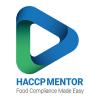I am aware this topic is a year old, but it still remains a problem. The revised ISO22000 professes to clarify the difference between OPRP and CCP. After studying the revised Standard it is still not clear to me. Auditors recently have queried the use of an alternative decision tree to codex. In answer to this, I drew up the following justification.
Both decision trees in Codex, and ISO22000 are not prescriptive but provided as guidance. Codex does not make provision for OPRP’s.
ISO 22000 has been developed as an auditable standard. However, individual organizations are free to choose the necessary methods and approaches to fulfil the requirements of the Standard. Clause 7.4.4 states: “The methodology and parameters used for this categorization (Categorization of Control Measures as OPRP’s or CCPs) shall be described in documents, and the results of the assessment shall be recorded.”
ISO22004 (which is a guideline for ISO22000) states:
“Categorization of control measures: The organization may focus on having as many of the control measures as possible managed by operational PRPs and only a few managed by the HACCP plan, or the opposite. It should be noted that, in certain cases, no CCP can be identified, for example because monitoring results cannot be provided within an adequate time frame. Based on the hazard assessment of 7.4.3, an appropriate combination of control measures shall be selected which is capable of preventing, eliminating or reducing these food safety hazards to defined acceptable levels.”
It is for the reason highlighted, that an additional question has been added to the decision tree relating to “time-frame”.
To support the above, this topic was identified and discussed during the meetings of the expert panel of ISO/TC 34/SC 17 during the revision of ISO TS 22004. The experts made a consensual decision about it. The decision tree is not a requirement of ISO 22000, and the experts do not recognize the need to have a decision tree for categorizing PRP, OPRP, and CCP. It is just one tool that may be used to categorize PRPs, OPRPs, and CCPs.
I am of the opinion that where continuous monitoring is not possible,- metal detectors, sieves, magnets – are OPRP’s.


















